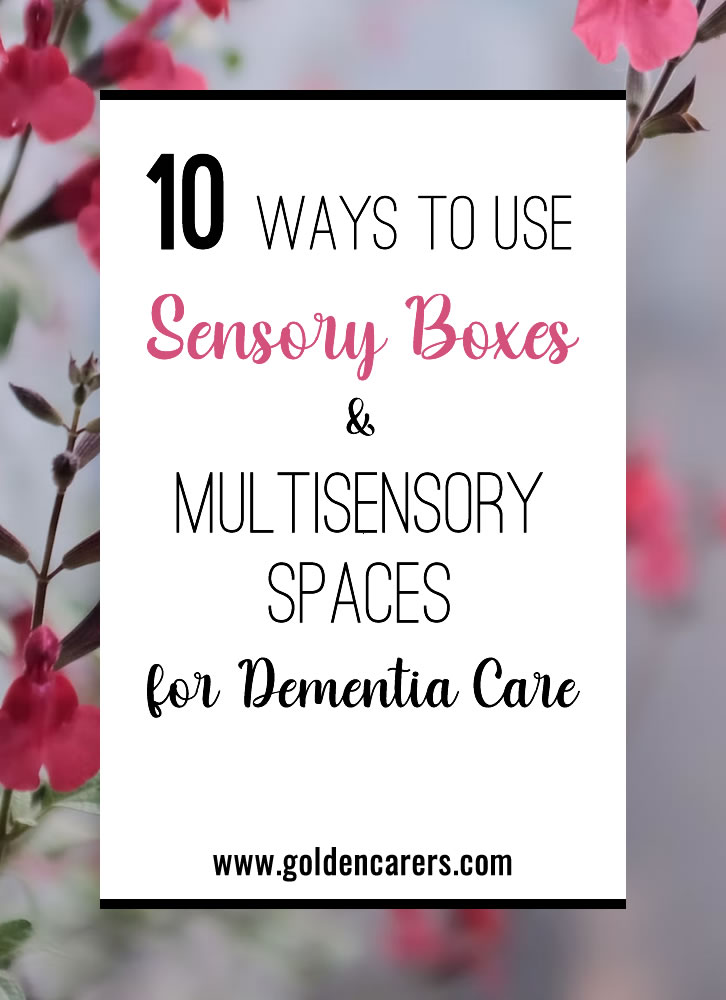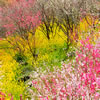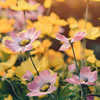
10 Ways to Use Sensory Boxes & Multisensory Spaces
Found In: ›Activities ›Articles ›Sensory ›Alzheimer's & Dementia

Golden Carers has 1000s of activities and resources for senior care.
Everyone experiences the world through the senses: sight, smell, taste, touch, and hearing. These senses diminish with age, impacting lifestyle and well-being.
Sensory changes can cause problems communicating, enjoying activities, and staying connected with others. People living with dementia are especially impacted by sensory loss.
What are Sensory Activities?
Sensory activities can be used to strategically activate one or more of the senses to help people living with dementia connect with the world around them.
Sensory activities should be soothing and enjoyable. They may include things like gentle hand massages, bird-watching in the sunshine, and listening to music. Sensory activities can be non-verbal; thereby crossing cultural boundaries.
Related: Sensory Stimulation for Dementia Care
Benefits of Sensory Stimulation
- Improve behavior and mood
- Increase concentration & brain function
- Improve communication
- Encourage participation
- Boost self-esteem and well-being
Related: Catalog of Sensory Activity Ideas
Examples of Multi-Sensory Activities
Multisensory activities are activities that combine two or more senses. Most sensory stimulation activities involve two or more of the senses such as:
- Drawing and listening to classical music
- Hand massage and conversation
- Relaxing on a beanbag while watching colorful landscapes on a TV screen
- Having nails groomed in a garden setting
Related: Sensory Stimulation with Wind Chimes
What is a Sensory Box?
Rummage, Memory or Sensory boxes are containers filled with everyday objects to assist people living with dementia to interact, communicate, and reminisce. These activities can also be a soothing form of distraction.
Boxes can be created to cater to individual needs or for the general use of residents. The aim is to offer failure-free, gentle stimulation of sight, sound, taste, smell, touch, and movement in a controlled environment.
5 Sensory Box Ideas
The aim of sensory boxes is to offer the opportunity to stimulate as many senses as possible. This activity is also an opportunity to relax, contemplate, chat and reminisce.
Sometimes you will have to demonstrate (depending on age or stage of illness) the activity to engage the person; the emphasis is on enjoyment and participation. Thorough supervision is essential with these types of activities. Here are some ideas for sensory boxes:
Balls Box
A large plastic box or a small suitcase of balls in different textures; rubber, plastic, fabric, squishy, baby (with a bell inside), porcupine balls, massage balls, glow-in-the-dark balls. Any type of tactile ball is suitable. The quantity of balls depends on the size of the box you have.
Cereal Box
A large container (46 x 23 cm or 18 x 9 inches) half-filled with uncooked oats or rice bubbles (Any cereal on sale). Offer spoons, cups, and other utensils for exploration.
Kinetic Sand Play
Kinetic sand can be shaped and stretched without separating. Place sand on a large cooking tray and offer safety utensils for exploration. Consult with management before purchasing.
Seeds Box
Gather or buy large seeds such as pine cones, waratahs, acorns, jacaranda, or whatever seeds you have on hand e.g. avocado seeds, coconut, peach pits. Seeds can provide a variety of different textures, shapes, and sizes to explore. NOTE: Be mindful of safety risks; insert small seeds into zip-lock plastic bags to avoid choking.
Food
Place a few boiled eggs or peeled bananas on a plate along with plastic cutlery. Demonstrate cutting the food and encourage residents to cut and taste it.
5 Ways to Create Multisensory Spaces
The addition of multisensory spaces to your facility may inspire residents to explore, interact or have somewhere where they can ‘just be’. Here are a few ideas:
Office
Create a working office in a corner for people who insist they have to ‘go to work’. Provide an office desk, computer, files, pens and highlighters, a hole-punch, in-out trays etc
Indoor Forest
There are many things you can do to bring nature inside. Setup a nature corner that includes pot plants, the bark of twigs of trees, moss planted in pots, small tree branches and grasses, palm leaves, banana leaves, bird of paradise leaves, and ferns.
Rummage Dresser
Setup a three or four-drawer dresser in a corner and fill it with everyday items such as doilies, napkins, beanies, colored socks, scarves, baby clothes, tea towels, and other items. Some people may enjoy sorting and organizing them.
Outdoor Garden Shed
Setup a garden shed with an old plastic wheelbarrow, potting mixture, garden tools, and buckets. Ask residents to help you tend to raised garden beds nearby.
Old Car
Buy an old car that is still in reasonable condition (perhaps it could be donated if you spread the word around) and place it in the backyard of your facility, under a carport or driveway. Residents may feel compelled to ‘wash’ it, ‘fix’ it, or just sit in it.
This is just a start! There are many more stimulating areas worth trying: familiar foods, texture-rich materials, reading, massage, painting, outings, and music.
Connecting with the senses is a valuable way to communicate with people living with dementia.
Related: Snoezelen Rooms & Sensory Environments for Dementia Care
We'd love to hear your feedback. What has worked for you?
Related Activities
Comments Post a Comment
 12th Nov 2020
Diversional Therapist
12th Nov 2020
Diversional Therapist
 2nd Mar 2019
Companion
2nd Mar 2019
Companion
Also, with 4 people and 4 balls rolling around the table top in different directions, absolute involvement and laughter. Of course I was chasing the ones that went on the floor. People did get tired fairly soon so I just quickly put them away, except for one which seemed to have disappeared until we found it hidden, tightly squeezed, in a resident's hand. :)
 3rd Mar 2019
Diversional Therapist
3rd Mar 2019
Diversional Therapist
 22nd Jul 2018
22nd Jul 2018
 27th Mar 2018
Speech Language Pathologist
27th Mar 2018
Speech Language Pathologist
Thank you so much
 31st Mar 2018
31st Mar 2018
 2nd Mar 2017
Nurse
2nd Mar 2017
Nurse
 8th Mar 2019
Companion
8th Mar 2019
Companion
At least while they are having fun with your activities they aren't drinking fake cranberry juice. :)
I've never personally given rewards for anything, but I've seen some of the other rec folks offer rewards for games (ie: Bingo), sometimes sweets but sometimes these are very small seasonal decorations. Dollar store packages of mini trees or bells or shamrocks, or .... Of course, it depends on whether or not your folks are likely to put it in their mouths... When I first started I took this lovely lady in late dementia the first daffodil from my garden. She looked at it, smiled at me and bit into it! Ah well, she wasn't poisoned. it's an ongoing process of discovery. So much fun!

 29th Mar 2016
29th Mar 2016
 1st Nov 2015
1st Nov 2015

 5 Ways to Honor Residents by Validating Their Past
5 Ways to Honor Residents by Validating Their Past
 5 Aphasia Activities for Senior Care
5 Aphasia Activities for Senior Care
 10 Reasons Why Your Community Needs More Plants
10 Reasons Why Your Community Needs More Plants
 9 Areas of Focus for Quality Improvement in Senior Care
9 Areas of Focus for Quality Improvement in Senior Care

 South Africa
South Africa